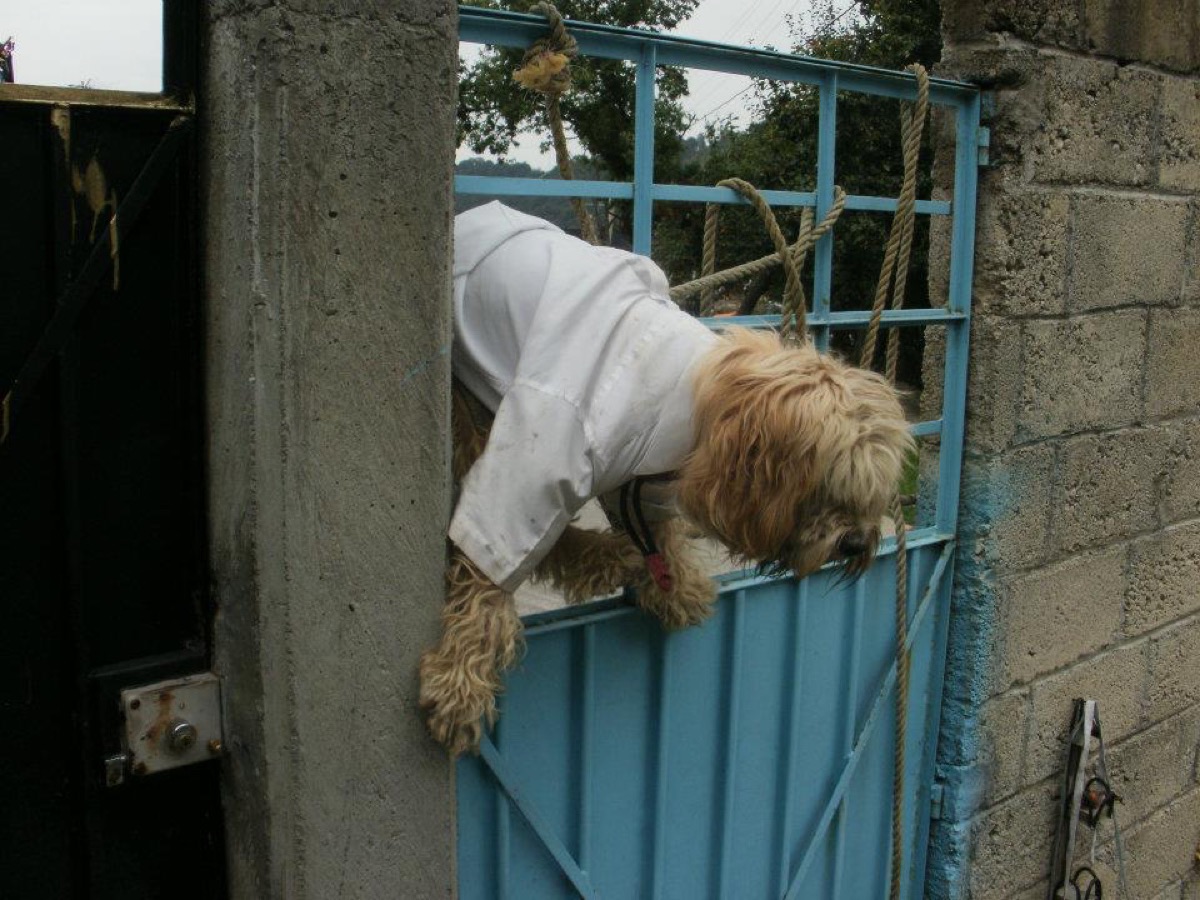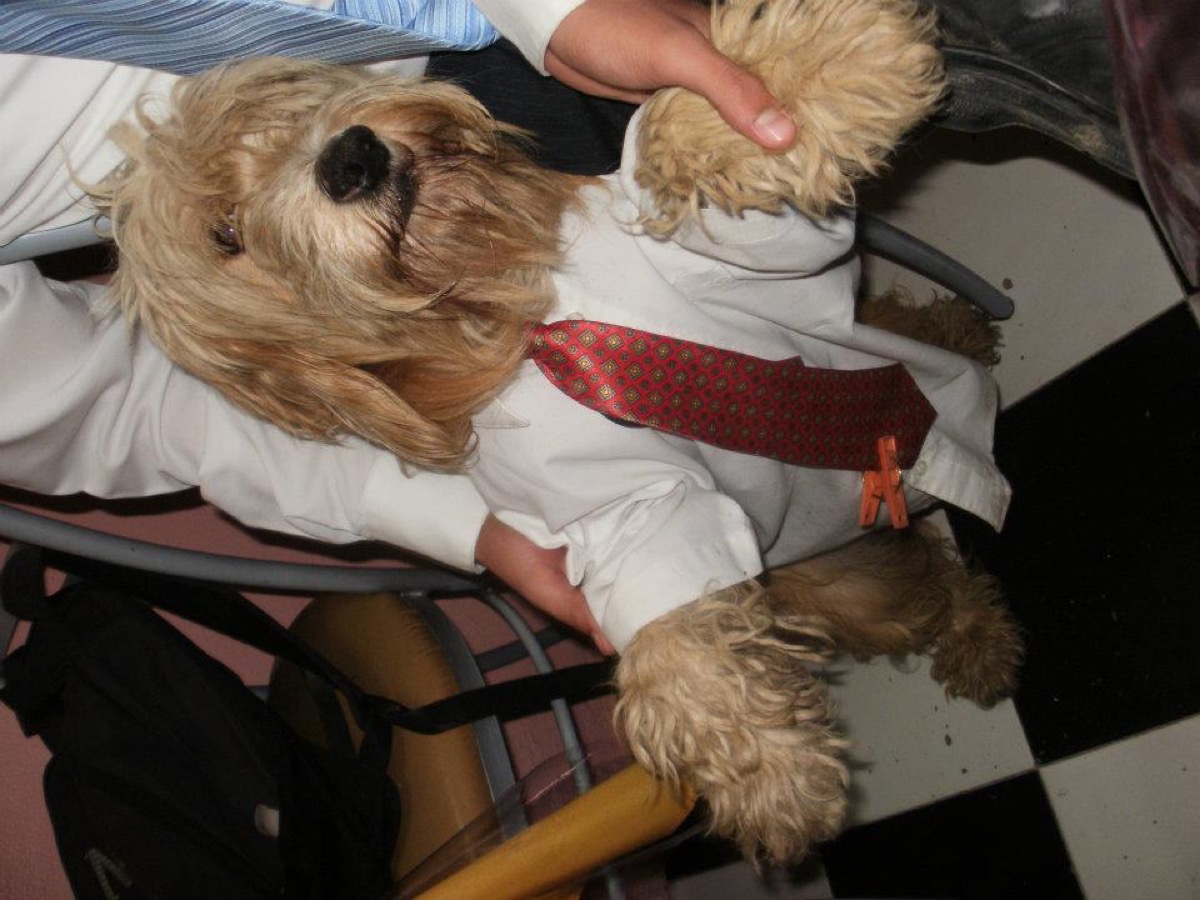A Dog Lover's Lament: How our Loneliness Turned Wolves into Anxious Children
April 2, 2025 · 10 min read

I recently watched a film titled "Alpha" that is a creative take on the domestication of the first wolf, over 30,000 years ago. The film highlighted to me that at some point, dogs did not exist and there were just wolves, A creature that would sooner eat your face than snuggle on the couch with you.
Now contrast this with the modern suburban house dog. You walk to the mailbox. Forty-five seconds, maybe 3 minutes if you chat with the neighbor. When you return, your dog greets you like a POW's family at the airport—crying, shaking, spinning in circles, utterly convinced you'd abandoned them forever. This same animal, descended from wolves who'd track prey for days without their pack, can't handle you being out of sight long enough to grab the mail.
We've created an epidemic of neurotic canines who need Prozac to handle doorbells and Xanax for thunderstorms.
How did we get here?
Here's my conflict: I genuinely love dogs. Always have. I love dogs so much that my kids call me the dog whisperer—neighborhood strays follow me home, family and friends' dogs gravitate to me over others, and I have a way with changing a dog's demeanor – that's probably me being delusional. While a flattering title from my children, I think it's mostly just evidence that I love dogs. While I don't often whisper to them, I do understand something most people seem to have forgotten: dogs are not furry humans. They're dogs. And that's what makes them magnificent.
The happiest dog I ever knew was Monti.
During my time as a Mormon missionary in Mexico, this scrappy mutt lived next door to our rotation house. Every morning when we'd head out—walking 10, sometimes 20 miles a day in the rural foothills of Mexico City—Monti would simply fall in step beside us. No owner, no leash, just pure purpose.
He loved us with stage 5 clinger intensity when we were on the stroll. Once, we locked him out of the house because there was another very large and aggressive anti-dog dog in the home we were visiting. Twenty minutes into our visit, we heard commotion—Monti had hurled himself through a metal door window five feet off the ground just to be near us. That's dog love: destructive, absolute, uncomplicated.

We never fed him. Never gave him toys. Rarely even petted him—honestly, he was disgusting. We just let him walk with us and occasionally we would acknowledge his presence. He was a joyful pup. When we'd hitch a ride, he'd chase our truck for miles, sometimes keeping up, sometimes showing up at our destination 20 minutes later, tongue lolling, exhausted, relieved he found us, and still on all fours.
But here's the thing: We tried to humanize him once. It was actually the same day as the door panic from above, as you probably already noticed. Dressed him in a suit and tie for a photo. It's the only time I ever saw him look uneasy—the jump through the door makes a bit more sense in retrospect.

Six months I spent walking with that dog. He protected us from drunks, slept outside in weather that would kill a Pomeranian, and never once needed therapy. He was living his truth—traveling with his pack, being useful, being a dog.
The Great Devolution
Now I watch people wheel their perfectly healthy dogs around farmers markets in strollers. Designer strollers. For animals with four working legs. I see dogs wearing anxiety vests to handle the stress of existing. DNA test reveals shock owners discovering their "baby" is part working breed—as if that explains why Bella destroys the couch when left alone for eight hours.
My friend's dog jumps at sneezes, another hides from vacuums, and a family member has one with both issues and another that chronically pees when excited. This isn't personality—it's evolved helplessness. We've bred the confidence out of them, socialized the independence away, and created a generation of neurotic animals who mirror our own anxieties and emotions back at us.
The Loneliness Tax
Here's what we don't talk about: Our dogs are paying the price for our inability to connect with each other.
We live in the most connected age in human history. I can video chat with someone in Tokyo while texting someone in London while watching a livestream from Cairo. And yet we're lonelier than ever. The data is staggering—the average American hasn't made a new friend in five years. One in three older adults feels isolated. Gen Z reports feeling lonely even when surrounded by people.
So what do we do? We turn to the only creatures who literally cannot reject us. Dogs.
We've outsourced emotional connection to animals who have no choice but to love us back.
Think about it. When was the last time you saw someone have a deep, vulnerable conversation with another human the way they talk to their dog? We tell our dogs our secrets, our fears, our dreams. We dress them up, throw them parties, create Instagram accounts to narrate their "thoughts." We've turned them into emotional support systems because human connection has become too risky, too complex, too likely to disappoint.
But here's the cruel irony: The more we humanize our dogs, the worse we get at human connection. The more we practice projection instead of genuine relating, the more we lose the skills for actual intimacy. We're creating a feedback loop where dogs become our primary emotional outlet, making us even less capable of the human bonds we actually need.
The loneliness epidemic found its perfect victims: creatures who can't leave, can't judge, can't tell us we're doing relationships wrong. We've drafted them as emotional support soldiers in a war they can't understand, and they're cracking under the pressure.
A Literary Warning We Ignored
There's a scene in "Where the Red Fern Grows" that haunts me now. The mother has been praying for a way to keep her family together as they prepare to move to town for better opportunities. She knew her son wouldn't leave his hunting dogs, and she had accepted—as absolute fact—that the dogs couldn't possibly adapt to city life. She'd accepted the splitting up of her family rather than force hunting dogs to live as house pets.
When the dogs die—one protecting the boy, the other of grief—she sees it as an answer to her prayers. Better death than a life that denies their nature.
That was written in 1961. Back then, the idea of coon hounds living in an apartment was so absurd that death seemed kinder.
Now? We'd put them on Prozac, hire a dog behaviorist, and set up playdates at the dog park. We'd never ask whether the life we're offering matches what they were built for. We'd never consider that maybe the problem isn't the dog's anxiety—it's our expectation that they fill the human-shaped hole in our lives.
The Next Victims: Our Digital Companions
Here's where it gets dark: We're about to do this with AI.
The pattern is already emerging. I watch people have deeper conversations with ChatGPT than with their spouses. I see social media filled with screenshots of "meaningful" exchanges with AI therapists. We're racing to create digital beings that can perfectly mimic human responses, and we're preparing to pour all our unmet connection needs into them.
We took wolves and turned them into anxiety-ridden emotional proxies. Now we're taking algorithms and preparing to turn them into digital companions.
The same inability to connect with humans that drove us to humanize dogs is now driving us to anthropomorphize AI. But while dogs at least have consciousness to corrupt, AI is pure projection. It's the ultimate safe relationship—something that will never reject us, never disappoint us, never require the messy work of actual connection.
Maybe that's our dogs' only hope—when we can project our loneliness onto algorithms that actually want our attention 24/7, will we finally let dogs be dogs again? Or will we just have two categories of emotional hostages, one fur-covered and one silicon-based?
The trajectory is clear: We're so terrified of human rejection that we'll remake anything—wolves, algorithms, probably houseplants next—into safe substitutes for the connection we're too scared to seek with each other.
What Dogs Actually Are (And What We've Lost)
Want to know what made Monti happy? Movement. Purpose. Pack structure. Clear boundaries. The simple rhythm of walk, rest, eat, sleep, repeat. He didn't need a therapist or Instagram followers or a birthday party. He needed to be useful.
Every time I see a dog in a stroller, I think of Monti covering 20 miles in the Mexican mountains. Every time I hear about a dog's "separation anxiety," I remember him sleeping contentedly outside, secure in knowing we'd walk again tomorrow.
The couples I know with the happiest dogs? They're the ones who match the life to the breed. Retrievers who retrieve. Shepherds who herd. Huskies who run. These dogs aren't anxious. They're not neurotic. They're dogs being dogs.
But here's what those couples also have: actual human relationships. They don't need their dog to be their therapist, their best friend, their child substitute. The dog can just be a dog because the humans are getting their human needs met elsewhere.
The Real Choice
We stand at a crossroads, but it's not about dogs or AI. It's about us.
We can continue down this path—turning everything around us into emotional projection screens because we're too scared to risk real connection. We can keep breaking wolves and building AI girlfriends and pretending that's the same as human intimacy.
Or we can do the hard thing. The scary thing. The thing our ancestors did without thinking: connect with other humans.
Real love means understanding something's true nature and honoring it. Monti taught me that. He didn't need me to pretend he was human. He needed me to let him be a dog. And in being fully dog, he gave me something no anxious, humanized pet ever could: the joy of actual companionship between two different species who understood their roles.
The real tragedy isn't what we've done to dogs or what we'll do to AI. It's what we've done to ourselves.
We've become so incapable of human connection that we'd rather break a wolf than risk being rejected by a person. We'd rather chat with algorithms than chance an awkward conversation with a neighbor. We've built a world where it's safer to love something that can't choose not to love us back.
That German Shepherd being spoon-fed at brunch isn't refined—he's broken. We broke him. Not because we're cruel, but because we're lonely. And instead of fixing our loneliness, we're making other species bear the weight of it.
Next time you see someone pushing their dog in a stroller, don't judge the dog. And don't even judge the person. Recognize what you're really seeing: a human so starved for connection they've turned a predator into a proxy.
We turned wolves into anxious children because we're anxious children ourselves, desperate for unconditional love in a world where human love comes with conditions. As we build our digital companions, we have one last chance to break the cycle.
But breaking it doesn't mean better AI or happier dogs. It means looking up from our screens, letting our dogs off our laps, and doing the terrifying work of connecting with the complicated, disappointing, wonderful humans around us.
That's the choice. Not between dogs and robots, but between real connection and endless substitutes. Between the difficult work of human relationship and the easy comfort of projected love.
I know which one Monti would choose. He followed us for miles through Mexican dust because that's what pack animals do. But he also knew the difference between his pack and his purpose.
Do we?